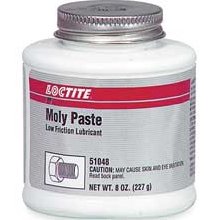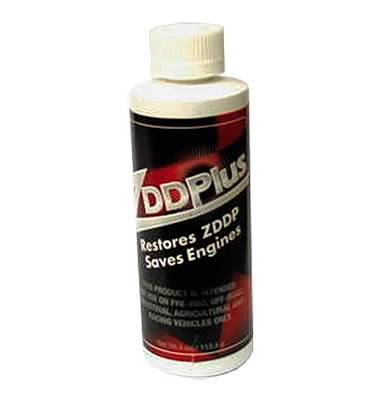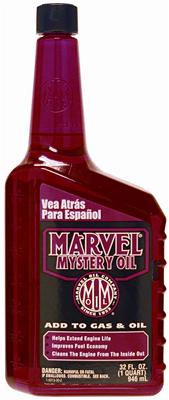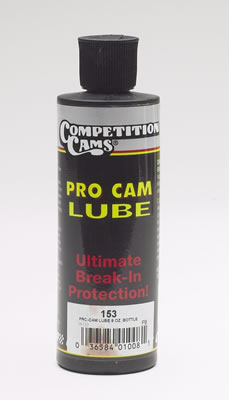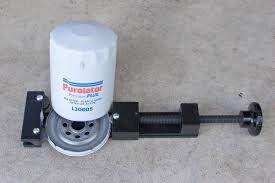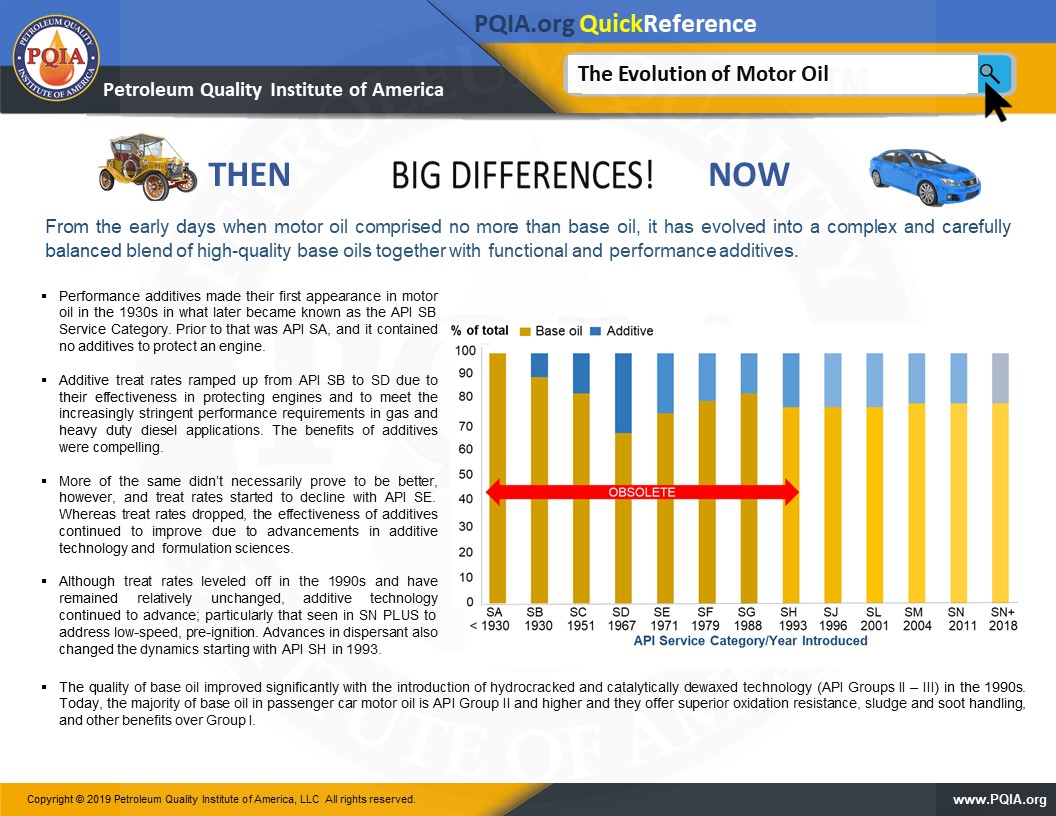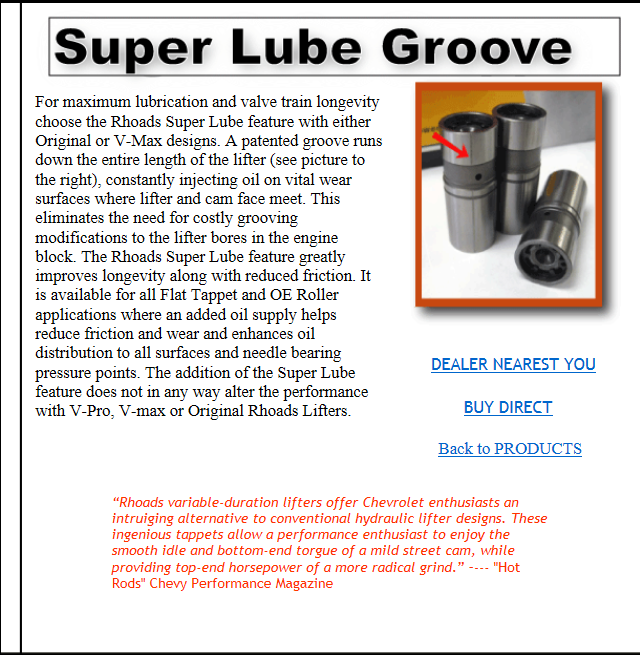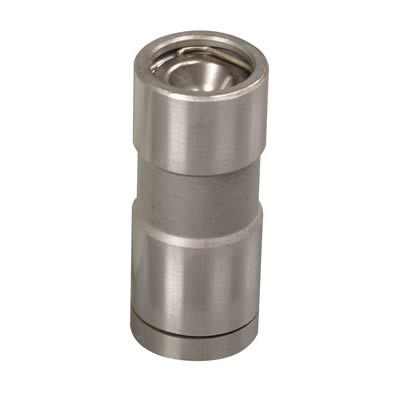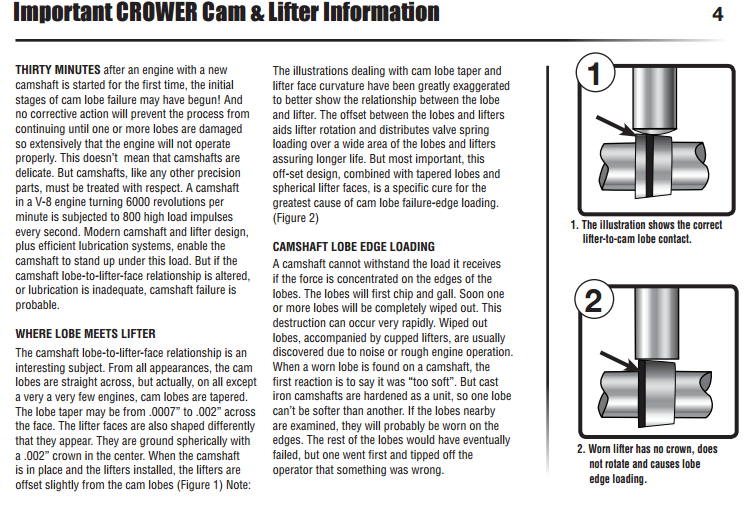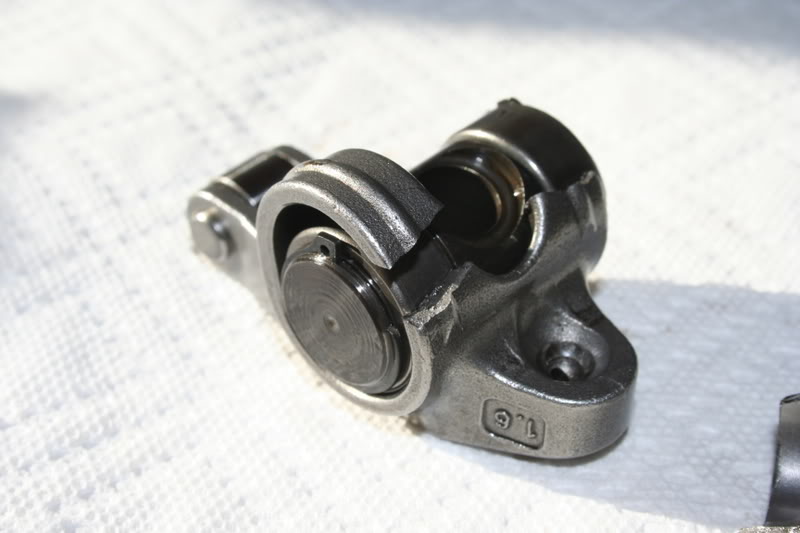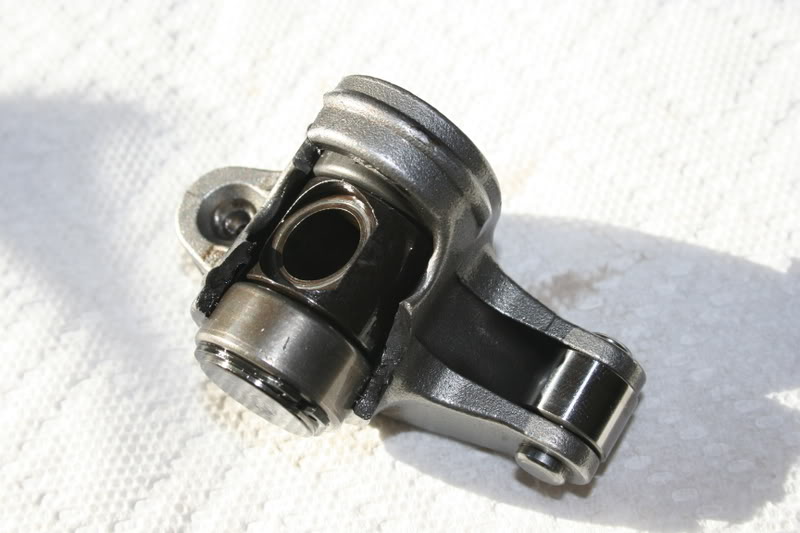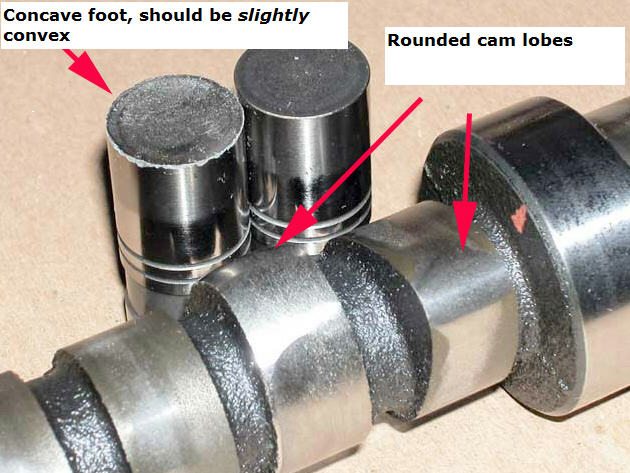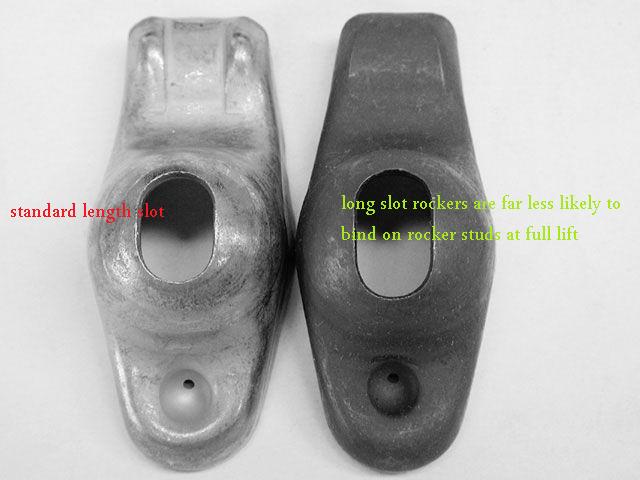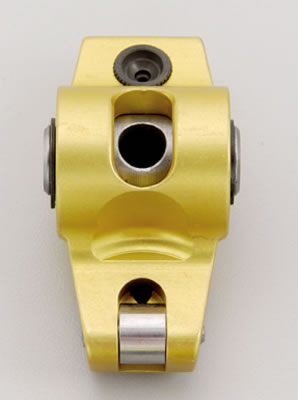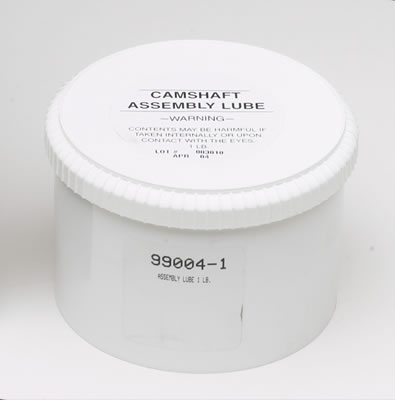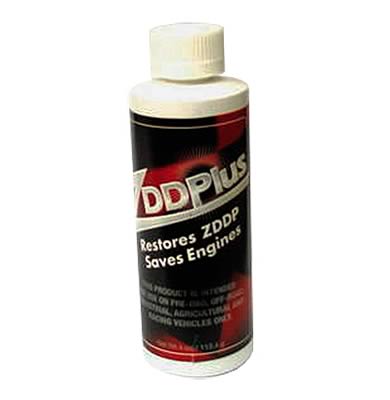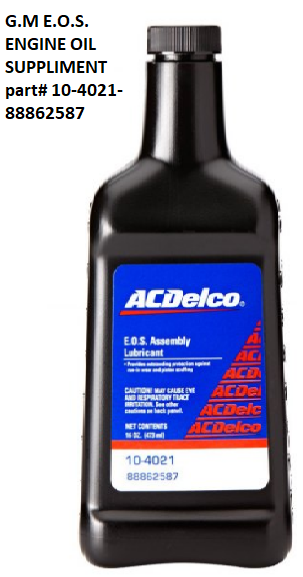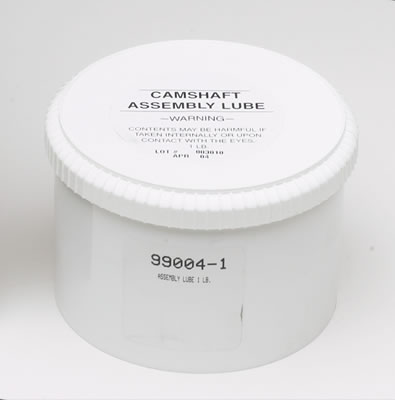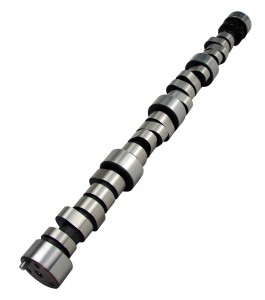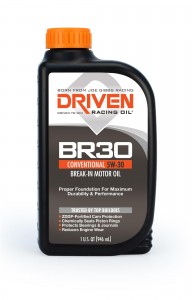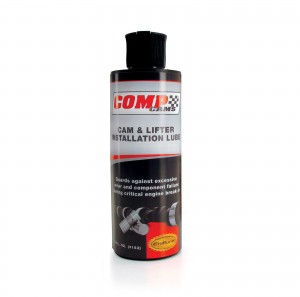540 RAT said:https://540ratblog.wordpress.com/
First, a little background info so that we are all on the same page. The independent and unbiased Engineering testing I perform at a REPRESENTATIVE OPERATIONAL TEMPERATURE, to establish motor oil wear protection capability, is a dynamic friction test under load, similar to how an engine dyno test is a dynamic HP/Torque test under load. Both tests show how their subjects truly perform in the real world, no matter what brand names are involved, no matter what outrageous claims may have been made, and no matter what their spec sheets may say.
My Motor Oil Wear Protection Ranking List of over 150 different oils, is "proven" by the Physics and Chemistry involved, and it EXACTLY matches real world Track experience, real world flat tappet break-in experience, and real world High Performance Street experience (test data validation doesn’t get any better than this). You can see the details on this, by going to the Oil Test Data Blog link below.
And the data used to create my Wear Protection Ranking List is NOT my opinion, and it is NOT my theory. The data, as mentioned above, is the result of the Physics and Chemistry involved in the testing. I am only the messenger. The Science is what tells us how these oils perform. And no reasonable person would try to argue with Physics and Chemistry. The fact is, motor oil wear protection capability is determined by the base oil and its additive package "as a whole", with the emphasis on the additive package, which is what contains the extreme pressure anti-wear components, and NOT merely by how much zinc is present. The use of zinc as the primary extreme pressure anti-wear component is outdated technology. Modern extreme pressure anti-wear components are equal to or better than zinc, which is why many modern low zinc oils outperform many traditional high zinc oils.
So, think twice before believing anything the naysayers say when they try to discredit my Motor Oil Engineering Test Data. There are always some who try. They are not actually arguing with me, even if they think they are. They are actually arguing against Physics and Chemistry. Who do you think will win that battle? And ask them how they figure they know more than what the Science of Physics and Chemistry proves. Ask them what their qualifications are. Ask them what testing they have ever done.
They are typically high zinc lovers who just can’t accept the fact that what they’ve always believed about the need for high zinc oils, is only an Old Wives Tale MYTH. So, they get upset and go out of their way trying to undermine anything that goes against what they have been brainwashed to believe about high zinc oils. But, emotion does not determine how good any particular oil is. Factual Engineering tests have proven over and over again that zinc levels alone DO NOT determine an oil’s wear protection capability. The naysayers cannot back-up anything they say, but I back-up everything I say with hard Engineering test data that exactly matches real world experience.
My Test Data Blog now has over 90,000 views worldwide. Of course simply listing the number of views by itself, is not intended to indicate validation of the test data (validation is shown throughout the Blog). But, indicating the number of views does show that an enormous number of people worldwide recognize the value, understand the importance, and make use of the motor oil test data FACTS included there, that cannot be found anywhere else. And as a result, they are posting and sharing links to my Blog, all over the world. See for yourself. A link is provided at the end of this posting.
*****
Now, on with Break-In Oil information.
So-called Break-In oils are typically hyped by claiming they provide for quick ring seating while providing extra wear protection for other parts. Of course no oil can be formulated to “allow” the wear of only certain parts, AND to “prevent” the wear of other parts, at the same time. It has to be formulated for one or the other, which we will see below.
When impossible Marketing claims like that are made, it is only to sell product, no matter what the truth really is. Many would call that blatant false advertising, which motor oils are famous for. The absolute best oils and the absolute worst oils all make the same claim about how great they are. Until my wear protection capability test data became available, buyers had no way of knowing which oils actually live up to those claims and which ones don’t. Because we now know that looking at the zinc level alone, is absolutely worthless, and tells you nothing about an oil’s wear protection capability.
Let’s take a look at component quantities of several Break-In Oils, from the Lab Tests performed by ALS Tribology in Sparks, Nevada.
Lucas 30 wt Break-In Oil, conventional
zinc = 4483 ppm
phos = 3660 ppm
moly = 3 ppm
total detergent/dispersant/anti-deposit build-up/anti-sludge = 1104 ppm
TBN = 5.9
This oil has by far, the highest level of zinc/phos I have ever come across. It has way more than twice the amount of zinc that begins to CAUSE wear/damage. Because of that, the extremely low level of TBN, and the extremely low level of detergent, this oil should be used for only a very short time, as a Break-In oil would suggest.
Comp Cams 10W30 Break-In Oil, conventional
zinc = 3004 ppm
phos = 2613 ppm
moly = 180 ppm
total detergent/dispersant/anti-deposit build-up/anti-sludge = 4234 ppm
TBN = 14.7
This oil also has by far, way too much zinc/phos. It has way more than enough zinc to begin causing wear/damage, rather than prevent it. Because of that, this oil also should be used for only a very short time, as a Break-In oil would suggest.
Edelbrock 30 wt Break-In Oil, conventional
zinc = 1545 ppm
phos = 1465 ppm
moly = 4 ppm
total detergent/dispersant/anti-deposit build-up/anti-sludge = 3452 ppm
TBN = 10.6
This oil is manufactured for Edelbrock by Torco.
Royal Purple 10W30 Break-In Oil, conventional
zinc = 1170 ppm
phos = 1039 ppm
moly = 0 ppm
total detergent/dispersant/anti-deposit build-up/anti-sludge = 3184 ppm
TBN = 9.8
As you can see above, there is absolutely no consistency at all, between the Break-In oils that were fomulated by these various Oil Companies. These oils are all over the place and bouncing off the walls. We see zinc from 1170 ppm to 4483 ppm. We see phos from 1039 ppm to 3660 ppm. We see detergent levels from 1104 ppm to 4234 ppm. And we see TBN values from 5.9 to 14.7. WOW!!! These oils couldn’t be much more different, and yet they are all aimed at the EXACT SAME Break-In oil market. It makes you wonder if these Oil Companies have any idea what they are doing, and if they even test these oils to see what they can really do.
So, let’s take a look at the wear protection these oils and several other Break-In oils, actually provide, and see how they rank just among themselves, according to their “Load Carrying Capacity/Film Strength" psi value. This data will tell us once and for all, what the Oil Companies would not, and that is, whether the oils are formulated to “allow” wear or “prevent” wear.
The Wear Protection reference categories are:
• Over 105,000 psi = INCREDIBLE wear protection
• 90,000 to 105,000 psi = OUTSTANDING wear protection
• 75,000 to 90,000 psi = GOOD wear protection
• 60,000 to 75,000 psi = MODEST wear protection
• Below 60,000 psi = UNDESIRABLE wear protection
The higher the psi , the better the Wear Protection
1. 30wt Amsoil Break-In Oil conventional = 78,192 psi
zinc = 2051 ppm
phos = 1917 ppm
moly = 0 ppm
2. 30wt Edelbrock Break-In Oil conventional = 69,160 psi
zinc = 1545 ppm
phos = 1465 ppm
moly = 4 ppm
3. Royal Purple 10W30 Break-In Oil, conventional = 62,931 psi
zinc = 1170 ppm
phos = 1039 ppm
moly = 0 ppm
4. Crane Cams 10W40 Break-In Oil, conventional = 62,603 psi
zinc = TBD, but bottle claims high zinc formula
phos = TBD
moly = TBD
5. 30wt Brad Penn, Penn Grade 1, Break-In Oil, conventional = 56,020 psi
zinc = TBD, but the bottle claims high zinc
phos = TBD
moly = TBD
6. 10W30 Comp Cams Break-In Oil, conventional = 51,749 psi
zinc = 3004 ppm
phos = 2613 ppm
moly = 180 ppm
7. 15W50 Joe Gibbs Driven BR Break-In oil, conventional = 51,299 psi
NOTE: Total Seal also sells this Break-In Oil with their label on it.
zinc = TBD
phos = TBD
moly = TBD
8. 30wt Lucas Break-In Oil, conventional = 49,455 psi
zinc = 4483 ppm
phos = 3660 ppm
moly = 3 ppm
9. 5W30 Joe Gibbs Driven BR30 Break-In Oil, conventional = 47,483 psi
NOTE: Total Seal also sells this Break-In Oil with their label on it.
zinc = TBD
phos = TBD
moly = TBD
Anyone who has followed my previous oil tests, knows that the wear protection capability psi values provided by most of these Break-In oils is quite low overall. Only the Amsoil made it into the GOOD WEAR PROTECTION category (75,000 to 90,000 psi). Edelbrock, Royal Purple and Crane Cams oils made it into the MODEST WEAR PROTECTION category (60,000 to 75,000 psi), while the Brad Penn, Comp Cams, Lucas and both Joe Gibbs Break-In oils managed only the UNDESIRABLE PROTECTION category (below 60,000 psi).
In comparison, the highest ranking oil (with no aftermarket additives) on my Wear Protection Ranking List, is 5W30 Motul 300V Ester Core 4T Racing Oil, synthetic = 112,464 psi, with a zinc level of 1724 ppm. That oil provides FAR GREATER wear protection capability than even the top ranked Amsoil Break-In oil here. And it provides nearly 2 1/2 times as much wear protection as the lowest ranked Joe Gibbs Break-In oil here.
So, now we finally know that because of their low wear protection capabilities, these Break-In oils are formulated only to allow wear, and are NOT formulated to provide a high level of wear protection. Of course it was impossible for them to be capable of both things at the same time, in spite of their advertising claims. And without the type of dynamic wear testing performed here, we would have never known what these Break-In oils were truly formulated for. To see how all 9 Break-In Oils rank in the overall Ranking List with over 150 different oils, go to the Oil Test Data Blog link below.
Every oil test I've performed, showed that the level of zinc has nothing to do with an oil's wear protection capability, nor its ranking against other oils. And we've seen it yet again here, that high zinc levels do NOT always provide better wear protection. In fact, the ULTRA HIGH zinc Lucas Break-In oil, ended up in next to last place in wear protection capability for this group of Break-In oils, and in the overall RankingLlist of over 150 different oils, it also ended up in next to last place.
And no one can complain that my test equipment and test procedure do not allow high zinc oils to perform at their highest level. Because here are some high zinc (over 1100 ppm) conventional, semi-synthetic, and full synthetic oils that I’ve tested previously. And they all had test results over 90,000 psi, which put them all in the “OUTSTANDING WEAR PROTECTION” category.
5W30 Motul 300V Ester Core 4T Racing Oil, synthetic = 112,464 psi
zinc = 1724 ppm
phosphorus = 1547 ppm
moly = 481 ppm
10W30 Lucas Racing Only, full synthetic = 106,505 psi
zinc = 2642 ppm
phos = 3489 ppm
moly = 1764 ppm
5W30 Joe Gibbs Driven LS30 Performance Motor Oil, synthetic = 104,487 psi
zinc = 1610 ppm
phosphorus = 1496 ppm
moly = 0 ppm
10W30 Valvoline NSL (Not Street Legal) Conventional Racing Oil = 103,846 psi
zinc = 1669 ppm
phos = 1518 ppm
moly = 784 ppm
10W30 Valvoline VR1 Conventional Racing Oil (silver bottle) = 103,505 psi
zinc = 1472 ppm
phos = 1544 ppm
moly = 3 ppm
10W30 Valvoline VR1 Synthetic Racing Oil, API SL (black bottle) = 101,139 psi
zinc = 1180 ppm
phos = 1112 ppm
moly = 162 ppm
30 wt Red Line Race Oil, full synthetic = 96,470 psi
zinc = 2207 ppm
phos = 2052 ppm
moly = 1235 ppm
10W30 Amsoil Z-Rod Oil, full synthetic = 95,360 psi
zinc = 1431 ppm
phos = 1441 ppm
moly = 52 ppm
10W30 Quaker State Defy, API SL (semi-synthetic) = 90,226 psi
zinc = 1221 ppm
phos = 955 ppm
moly = 99 ppm
Continued below:
Last edited by a moderator:


